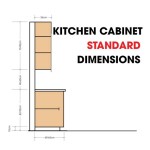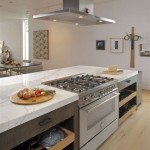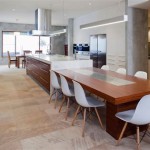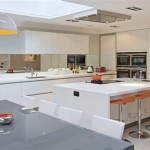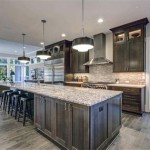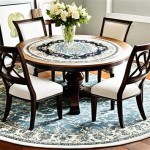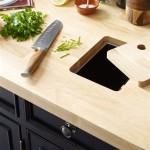Garage Style Roll Up Kitchen Window: Blending Functionality and Design
The garage style roll up kitchen window, sometimes referred to as a pass-through window, represents an innovative approach to indoor-outdoor living. It moves beyond the traditional fixed window or sliding window, offering a dynamic opening that can completely transform a kitchen space. This design element borrows heavily from the practical functionality of garage doors, adapting the concept to a smaller, more aesthetically focused scale. While not appropriate for every kitchen, under the right circumstances, a roll up window can dramatically improve a home's lifestyle.
A roll up kitchen window is typically constructed of multiple panels, often glass or a combination of glass and metal. These panels are connected and guided along tracks, allowing the window to roll upwards and disappear into an enclosure above the opening. This creates a completely unobstructed view and seamless transition between the indoor kitchen space and the outdoor patio, deck, or bar area. The operation can be manual, utilizing a counterbalance system for smooth lifting, or motorized, providing push-button control for added convenience. Its increasing popularity stems from its ability to enhance entertainment spaces, improve airflow and natural light, and create a unique architectural feature.
Key Benefits of Garage Style Roll Up Kitchen Windows
The inclusion of a garage style roll up kitchen window can bring a multitude of advantages to a home's design and functionality. The decision to incorporate this feature should be carefully weighed, considering budget, lifestyle, and the specific needs of the homeowner. However, the potential benefits are substantial and warrant thorough consideration.
One of the primary benefits is the enhanced indoor-outdoor connection. By completely opening the window, it effectively merges the kitchen with the outdoor space. This is particularly advantageous for homeowners who frequently entertain or enjoy outdoor dining. The pass-through window creates a convenient serving area, allowing for easy transfer of food and drinks from the kitchen to the outdoor area. It also facilitates conversation and interaction between those inside and outside, fostering a more inclusive and social atmosphere. This seamless connection can transform a home's usability, extending living space and promoting a more relaxed and engaging lifestyle.
Another advantage lies in the improved ventilation and natural light it provides. Unlike traditional windows that offer limited airflow, a roll up window, when fully opened, creates a large, unobstructed opening that allows for maximum ventilation. This is particularly beneficial in kitchens, where cooking odors and excess heat can quickly accumulate. The increased airflow helps to keep the space fresh and comfortable. Furthermore, the large window area allows for ample natural light to flood the kitchen, reducing the need for artificial lighting during the day and creating a brighter, more inviting environment. The ability to control the amount of light and ventilation is a significant advantage over fixed window options.
Finally, the aesthetic appeal and unique architectural element that a roll up window provides should not be overlooked. This feature adds a touch of contemporary design and sophistication to any kitchen. It serves as a focal point, showcasing the homeowner's commitment to innovative design solutions. The ability to customize the window's materials, colors, and finishes allows it to seamlessly integrate with the overall architectural style of the home. Whether the design is modern, rustic, or traditional, the roll up window can be tailored to complement the existing aesthetic, enhancing its visual appeal and adding value to the property. It moves beyond mere functionality, becoming a statement piece that elevates the overall design.
Design Considerations for Implementation
The integration of a garage style roll up kitchen window requires careful planning and consideration of various design elements. The success of the installation hinges on evaluating the structural limitations of the space, selecting appropriate materials, and integrating the window seamlessly into the overall kitchen design.
Structural integrity is paramount. The installation of a roll up window often necessitates modifications to the existing wall structure. It is crucial to consult with a qualified structural engineer to assess the load-bearing capacity of the wall and ensure that any necessary reinforcements are implemented. This may involve adding structural beams or modifying the framing to accommodate the weight of the window and the opening it creates. Failure to address these structural concerns can compromise the safety and stability of the wall, potentially leading to costly repairs in the future. Professional evaluation is non-negotiable to guarantee the window's safe and reliable operation.
Material selection plays a significant role in the window's performance, durability, and aesthetic appeal. Common materials used for roll up kitchen windows include aluminum, steel, and wood for the frame, and glass, acrylic, or polycarbonate for the panels. Aluminum offers excellent durability and corrosion resistance, making it suitable for coastal environments. Steel provides superior strength, while wood offers a warmer, more traditional aesthetic. The glazing material should be selected based on energy efficiency, security, and desired level of privacy. Options include single-pane, double-pane, and low-E glass. The choice of materials should be carefully considered to ensure that the window can withstand the elements, provide adequate insulation, and complement the overall design of the kitchen.
Seamless integration with the kitchen design is essential for achieving a cohesive and visually appealing space. The window's style, color, and finish should harmonize with the existing cabinetry, countertops, and other design elements. The hardware, such as handles and hinges, should also be carefully selected to complement the overall aesthetic. Consider the window's placement within the kitchen layout to maximize its functionality and visual impact. The surrounding area should be designed to facilitate easy access and use of the pass-through feature. This may involve incorporating a countertop extension, outdoor bar area, or seating arrangement. The goal is to create a seamless transition between the indoor and outdoor spaces, both visually and functionally.
Operational and Maintenance Aspects
The operational and maintenance characteristics of a garage style roll up kitchen window are important considerations when deciding on this feature. The ease of operation, frequency of maintenance, and potential repair costs can significantly impact the long-term satisfaction with the window.
The operational mechanism of a roll up kitchen window typically involves a counterbalance system or a motorized system. The counterbalance system utilizes springs or weights to assist in lifting and lowering the window, making it easier to operate manually. Motorized systems offer push-button control for added convenience, especially for larger or heavier windows. The reliability and smoothness of the operational mechanism are crucial for ensuring user satisfaction. It is important to select a system that is well-engineered, durable, and easy to use. Regular lubrication of moving parts is recommended to maintain smooth operation and prevent wear and tear.
Maintenance requirements for roll up kitchen windows are relatively minimal, but regular cleaning and inspection are essential for preserving their appearance and functionality. The glass panels should be cleaned regularly with a mild detergent and water to remove dirt, grime, and fingerprints. The frame should also be cleaned periodically to prevent the buildup of dust and debris. Inspect the hardware, such as hinges and tracks, for signs of wear or damage. Lubricate the moving parts as needed to ensure smooth operation. Addressing minor issues promptly can prevent them from escalating into more significant problems that require costly repairs. Adhering to a regular maintenance schedule will extend the lifespan of the window and maintain its aesthetic appeal.
Potential repair costs for roll up kitchen windows can vary depending on the type of damage and the complexity of the repair. Common issues include broken glass panels, damaged hardware, and malfunctioning operational mechanisms. Minor repairs, such as replacing a broken hinge or lubricating a sticky track, can often be handled by a homeowner with basic DIY skills. However, more complex repairs, such as replacing a broken glass panel or repairing a malfunctioning motorized system, may require the services of a professional window repair technician. It is advisable to obtain multiple quotes from qualified contractors before proceeding with any major repair work. Consider purchasing a warranty or service agreement to protect against unexpected repair costs. Proactive maintenance and prompt attention to minor issues can help to minimize the likelihood of costly repairs in the future.

Garage Style Pass Through Windows Design Ideas

Garage Style Pass Through Windows Design Ideas

Kitchen Pass Through Window 60x60 Whole Doors

Bar Restaurant Glass Garage Doors

Outdoor Living Garage Doors In Buford Ga Countertop

Garage Style Pass Through Windows Design Ideas

39 Glass Garage Door Ideas To Rock In Your Interiors Digsdigs

Everything You Ever Wanted To Know About Roll Up Glass Garage Door Decoholic

Rolling Garage Door Designs

Roll Up Doors To Create Instant Style

